
Unless you’re training in a Gracie Barra gym, or a self-defense oriented BJJ gym, you most likely do not pay a lot of attention to headlocks. Or, should I say, headlock escapes. That’s not a good idea./ The moment a high-level Judoka walks through the door and gets to a scarf hold (and they will) you’ll instantly regret not having BJJ headlock escapes in your arsenal. They’re not just there for self-defense reasons, but actually have a large application in Jiu-Jitsu, both on the ground, and standing.
Headlocks in BJJ are not a go-to position. The above example of a Judo scarf hold (aka Kesa Gatame) is probably the most widely used headlock variation in the sport. Or is it? When it comes to intentionally looking for BJJ headlocks, the scarf hold tops the list. But, what happens when we’re wrestling on our feet, or dealing with the turtle, or even trying to pass the guard? In most of these situations, albeit unintentionally, we do use a lot of headlock variations. Conversely, headlock escapes are a must if we want to avoid scrambles, and most of those Guillotine choke taps.
The Ultimate Playground Fight Position
Headlocks are a position that comes naturally to people. If you take a look at playground fights, kids usually go for it without even knowing what they’re doing. If 90% of fights end up on the ground (I completely made up that number), then 99% of them involve a headlock of some kind. This is as true for adults as it is for kids, and is just as true for the streets as it is on playgrounds.
Headlocks come in all shapes and sizes, and as such, are based on one basic human instinct – control someone’s head. Since we imitate a lot of movement and momentum with our necks, we instinctually like to control someone’s head when we’re in a fight, be it a street fight or a combat sports match. Of course, with trained people, getting to a headlock is difficult and achieving something with one, even more so However, when trained people start using headlocks, it doesn’t matter how much grappling, or any martial art you know. If you do not have headlock escapes ready to sue, you’ll not just end up on the ground, but suffer along the way as well.
That said, BJJ headlock options go further than most other sports. Front headlocks (like those in wrestling), side headlocks (think Judo), standing headlocks( think Blood Sport), and even rear headlocks are a part of the game. Moreover, they are not just available both standing and on the ground, but also with and without a Gi. In all honesty, a headlock won’t offer too much offense, depending on the variation, given that usually both arms are involved. However, it will pin you and restrict your movement. In certain situations, like front headlocks, they’ll also open up chokes as well.
Standing BJJ Headlock Escapes
On the subject of BJJ headlock escapes, let’s start standing. It is not as much a thing of self-defense, although we’ll cover one such version, bot more of dealing with headlocks when they arise as a result of the standing grip fighting game that we all use to set up takedowns. In that sense, standing BJJ headlock escapes are not just useful, but mandatory.
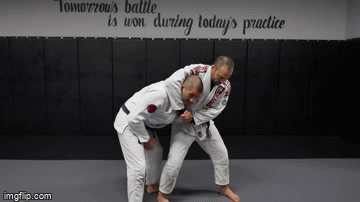
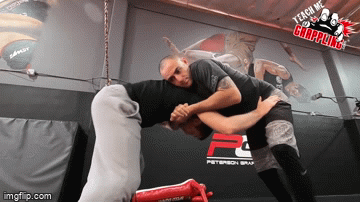
Headlock Escapes On The Ground
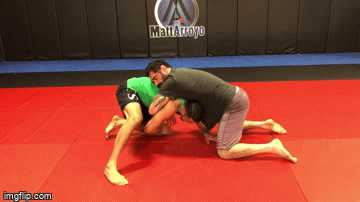
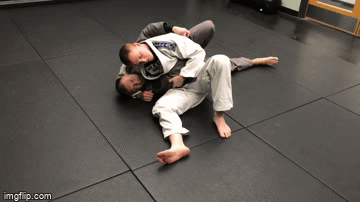
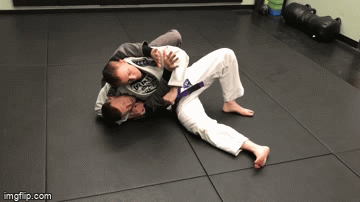
Closing Arguments
BJJ headlock escapes are something that is undertrained but comes in more than useful in both sports and real lie situations. It is not just prudent to know how to defend headlocks for the needs of Jiu-Jitsu. The principles work perfectly if you apply them the other way around, in holding headlocks, and preventing people from escaping, or knowing when to transition. Simply put, have fun with headlocks, and at least master how to avoid and counter the front headlock, if you’re not going to go deeper into that area. You’ll thank me one day.


![Darce Choke Encyclopedia – Origins, Mechanics and Variations [2025] BJJ, choke, Brabo, BJJ Darce Choke, D'arce Choke, Darce BJJ Choke](https://bjj-world.com/wp-content/uploads/2017/11/JungPoirierLeeYahoo-218x150.jpg)










![No-Gi Grapplers Guide To Front Headlock Joel Bane DVD Review [2025] No-Gi Grapplers Guide To Front Headlock Joel Bane DVD Review](https://bjj-world.com/wp-content/uploads/2025/03/no-gi-front-headlock-joel-bane-dvd-review-218x150.png)

![Get Off My Legs Gringo Craig Jones DVD Review [2025] Get Off My Legs Gringo Craig Jones DVD Review](https://bjj-world.com/wp-content/uploads/2025/03/get-off-my-legs-gringo-craig-jones-dvd-review-218x150.png)

![Leg Lock Entries Helena Crevar DVD Review [2025] Leg Lock Entries Helena Crevar DVD Review](https://bjj-world.com/wp-content/uploads/2025/03/leg-lock-entries-helena-crevar-dvd-review-218x150.png)


![Advanced Chin Control Concepts David Petrone DVD Review [2025] Advanced Chin Control Concepts David Petrone DVD Review](https://bjj-world.com/wp-content/uploads/2025/01/chin-control-concepts-david-petrone-dvd-review-100x70.png)

![Dima Murovanni Kill The Collar Tie BJJ Trendsetters DVD Review [2024] Dima Murovanni Kill The Collar Tie BJJ Trendsetters DVD Review](https://bjj-world.com/wp-content/uploads/2024/09/dima-murovanni-kill-the-collar-tie-dvd-review-100x70.png)
![Essential Shin To Shin System Shawn Williams DVD Review [2025] Essential Shin To Shin System Shawn Williams DVD Review](https://bjj-world.com/wp-content/uploads/2025/01/shin-to-shin-system-shawn-williams-dvd-review-100x70.png)
![Grappling Takedown Dominance Brandon Ruiz DVD Review [2025] Grappling Takedown Dominance Brandon Ruiz DVD Review](https://bjj-world.com/wp-content/uploads/2025/01/grappling-takedown-dominance-brandon-ruiz-dvd-review-100x70.png)
![Woj Lock the World Chris Wojcik Ankle Locks DVD Review [2024] Woj Lock the World Chris Wojcik Ankle Locks DVD Review](https://bjj-world.com/wp-content/uploads/2024/12/woj-lock-the-world-chris-wojcik-dvd-review-100x70.png)
![Crossing and Spinning Steps To Attack Israel Hernandez DVD Review [2024] Crossing and Spinning Steps To Attack Israel Hernandez DVD Review](https://bjj-world.com/wp-content/uploads/2024/09/spinning-steps-to-attack-israel-hernandez-dvd-review-100x70.png)
![Reverse Armlock Magid Hage DVD Review [2024] Reverse Armlock Magid Hage DVD Review](https://bjj-world.com/wp-content/uploads/2024/12/reverse-armlock-magid-hage-dvd-review-100x70.png)

![Zen Guide To Submission Grappling Margot Ciccarelli DVD Review [2025] Zen Guide To Submission Grappling Margot Ciccarelli DVD Review](https://bjj-world.com/wp-content/uploads/2025/02/submission-grappling-margot-ciccarelli-dvd-preview-100x70.png)

![Darragh O’Conaill Crucifix Encyclopedia DVD Review [2024] Darragh O'Conaill Crucifix Encyclopedia DVD Review](https://bjj-world.com/wp-content/uploads/2024/10/darragh-oconaill-crucifix-encyclopedia-dvd-review-100x70.png)

![Leg Lock Strategies: Navigating Entanglements Jack Stapleton DVD Review [2024] Leg Lock Strategies: Navigating Entanglements Jack Stapleton DVD Review](https://bjj-world.com/wp-content/uploads/2024/12/navigating-entanglements-jack-stapleton-dvd-review-100x70.png)
![Full Guard Formula James Booth DVD Review [2025] Full Guard Formula James Booth DVD Review](https://bjj-world.com/wp-content/uploads/2025/02/full-guard-formula-james-booth-dvd-review-100x70.png)
![Wristlocks From The Top Pete Letsos DVD Review [2025] Wristlocks From The Top Pete Letsos DVD Review](https://bjj-world.com/wp-content/uploads/2025/01/wristlocks-from-the-top-pete-letsos-dvd-review-100x70.png)


![Bricks Kesa Gatame System Jeremy Brick DVD Review [2025] Bricks Kesa Gatame System Jeremy Brick DVD Review](https://bjj-world.com/wp-content/uploads/2025/02/bricks-kesa-gatame-system-jeremy-brick-dvd-review-100x70.png)
![The Stack Pass Andre Galvao DVD Review [2025] The Stack Pass Andre Galvao DVD Review](https://bjj-world.com/wp-content/uploads/2025/01/the-stack-pass-andre-galvao-dvd-review-100x70.png)
![Spider and Lasso Guard Jared Welman DVD Review [2025] Spider and Lasso Guard Jared Welman DVD Review](https://bjj-world.com/wp-content/uploads/2025/01/spider-and-lasso-guard-jared-welman-dvd-review-100x70.png)
![Total Domination Top Control Mariusz Domasat DVD Review [2024] Total Domination Top Control Mariusz Domasat DVD Review](https://bjj-world.com/wp-content/uploads/2024/09/domination-top-control-mariusz-domasat-dvd-review-100x70.png)
![Baseball Chokes From Everywhere Magid Hage DVD Review [2025] Baseball Chokes From Everywhere Magid Hage DVD Review](https://bjj-world.com/wp-content/uploads/2025/01/baseball-chokes-from-everywhere-magid-hage-dvd-review-100x70.png)

![Shin to Shin Eoghan O’Flanagan DVD Review [2025] Shin to Shin Eoghan O'Flanagan DVD Review](https://bjj-world.com/wp-content/uploads/2024/12/shin-to-shin-eoghan-oflanagan-dvd-review-100x70.png)
![Mastering Control From Top Position Trent Hidlay DVD Review [2024] Mastering Control From Top Position Trent Hidlay DVD Review](https://bjj-world.com/wp-content/uploads/2024/11/control-from-top-position-trent-hidlay-dvd-review-100x70.png)